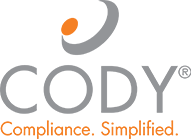Lessons Learned from the 2015 AEP Materials Creation Season – And how to best prepare for next year
At the end of September, Medicare Advantage (MA) and Prescription Drug Plans (PDPs) should have successfully delivered to members their Annual Notification of Changes (ANOC) and Evidence of Coverage (EOC) materials. This should come as a relief to health plans, as creating these materials – which must be distributed before the Annual Enrollment Period (AEP) – can be a time-consuming, labor-intensive process wrought with compliance risk.
Thankfully, yesterday’s challenges can be learning opportunities that help us improve in the future. The following are four lessons learned leading up to the 2015 AEP that will help health plans better prepare for creating ANOCs and EOCs next year:
Lesson #1: A comprehensive timeline is key to success
One challenge some MA and PDP plans faced this year was the absence of a formalized timeline for developing and distributing materials. With little time to collect information and create documents after The Centers for Medicare & Medicaid Services (CMS) releases its ANOC and EOC model documents, developing a comprehensive timeline well in advance is key to staying on schedule and distributing materials on time.
It’s also important that this timeline be flexible, as delays from CMS may push back schedules and require that health plans hurry up and then wait, or worse, vice versa. Next year, make sure you have a timeline that has enough padding to adjust for delays.
Lesson #2: Key contributors should be identified early
When developing their ANOC and EOC documents for the 2015 AEP, many plans neglected to proactively identify the cross-functional team needed to ensure that materials were accurate, on schedule and in compliance. As a result, identifying and gaining the commitment of subject matter experts (SMEs) to review documents for accuracy and compliance came as a bit of a challenge.
When not all departments are adequately involved in this process, plans risk distributing materials containing mistakes or errors. To alleviate this problem, plans should identify key contributors and build a cross-functional team early on in the process. This should include SMEs from all relevant areas of the organization who can provide timely review of content and ensure accuracy of information.
Lesson #3: Clear leadership should be established
While establishing a cross-departmental team is an important part of success for the AEP document creation process, every team needs a leader. Health plans that did not have a dedicated individual responsible for guiding the materials creation process and all its players may have risked wasting both time and money, and increased their risk of non-compliance.
Additionally, if this individual did not have cross-departmental authority, precious time was wasted on gaining cooperation from individuals not within the project leader’s reporting structure.
Next year, prior to selecting a team or establishing a timeline, a leader within the organization should be appointed to manage the ANOC and EOC materials creation process from beginning to end. Ideally, this person will have limited work commitments aside from this project to ensure a dedicated focus. They must also have the authority to push the process forward, make decisions and obtain content and approvals from other team members.
Lesson #4: Software should be used to increase efficiency and compliance
During the 2015 AEP prep season, health plans that used a software tool to help manage the materials creation process had an easier time coordinating all the different moving parts involved. In addition, they likely reduced their risk of document errors, costly errata mailings, and late project completion – not to mention dramatically decreased the stress levels of project participants.
Tools are available that help health plans manage all aspects of development, tracking and distribution of these required materials, and many successful plans integrate these software solutions into their materials creation process. If they have not already, plans should start exploring tools that facilitate a comprehensive approach to marketing collateral needs.
A powerful tool will include modules that manage scheduling, compliance, document creation, as well as overall project management. And don’t forget, individuals on the materials creation team must be fully trained to use these tools. After all, what good is a solution that streamlines processes if those within the organization do not use it properly or to the full extent of its capabilities?
The good news is the 2015 ANOC and EOC mailing project is done – you’ve made it through. Now, let’s use the lessons learned and make next year even better.
by Al Valenti and Kelly Altmann
